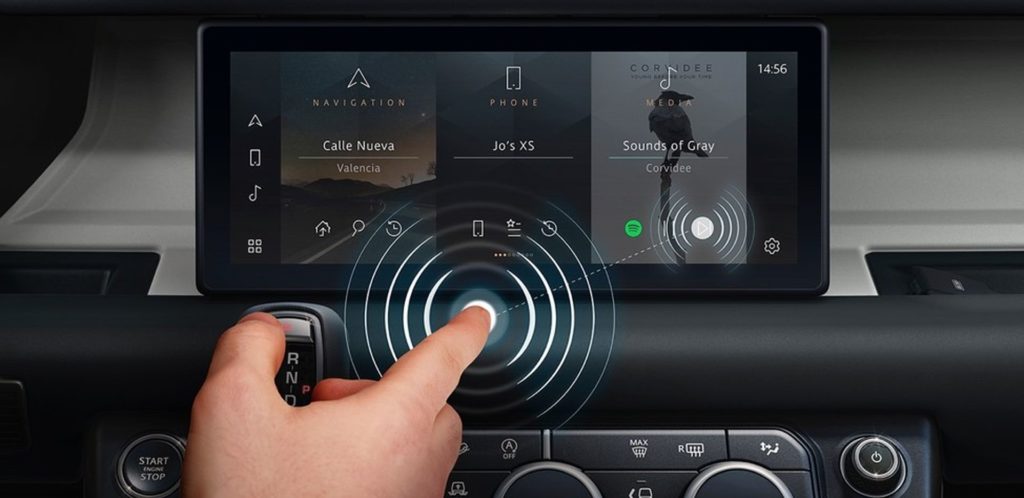
If you have shared vehicles in your fleet, disinfecting surfaces touched by drivers is something that cannot be overlooked in today’s post COVID-19 world. Better still is making sure drivers don’t need to touch certain surfaces.
New contactless touchscreen technology developed by Jaguar Land Rover and the University of Cambridge can help achieve that by keeping drivers’ eyers on the road and reducing the spread of bacteria and viruses in a post COVID-19 world.
Lab-tests and on-road trials showed the predictive touch technology could reduce a driver’s touchscreen interaction effort and time by up to 50%, as well as limiting the spread of bacteria and viruses. Uneven or poor road surfaces can often cause vibrations that make it difficult to select the correct button on a touchscreen. This means drivers must take their attention away from the road, increasing the risk of an accident.
The new developed technology uses artificial intelligence to determine the item the user intends to select on the screen early in the pointing task, speeding up the interaction. A gesture tracker uses vision-based or radio frequency-based sensors to combine contextual information such as user profile, interface design and environmental conditions with data available from other sensors, such as an eye-gaze tracker, to infer the user’s intent in real time.
The system is part of Jaguar Land Rover’s Destination Zero vision – a desire to make its vehicles safer and the environment cleaner and healthier.
It is as yet unclear when this technology will be added to production vehicles.
Photo credit: Jaguar Land Rover